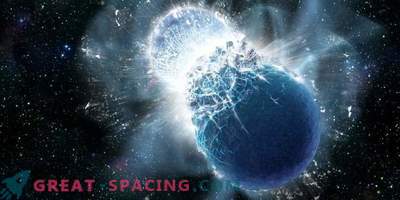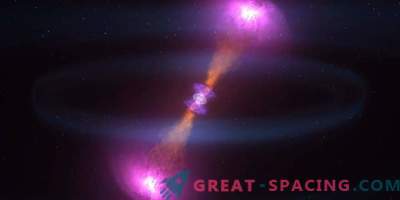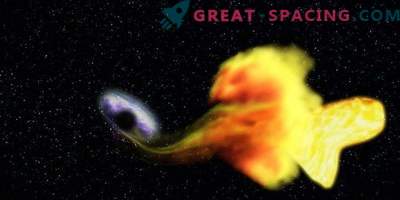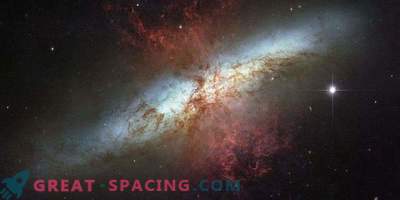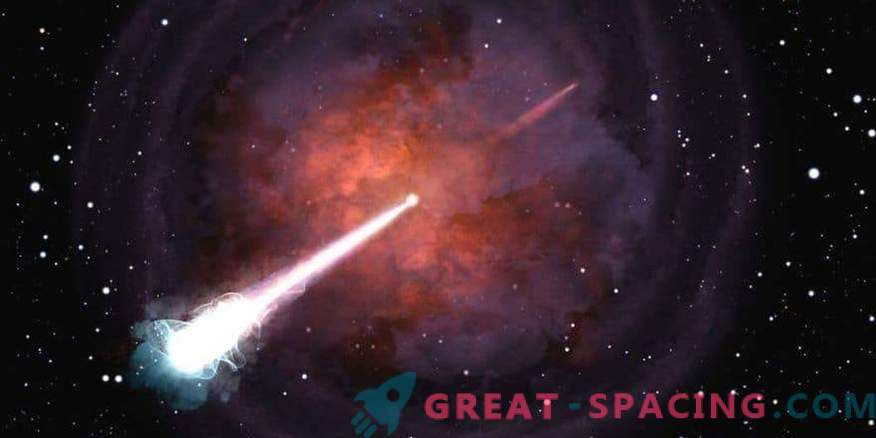
Artistic vision of the merger of two neutron stars surrounded by a cocoon of released material and a bursting jet
A detailed view of the first fixed fusion of neutron stars shows how collisions between dead stars can cause one of the most powerful explosions in the Universe.
In 2017, astronomers were the first to notice the merging of a pair of neutron stars. We are talking about the remnants of large stellar objects that died in supernova explosions. Event managed to catch thanks to the detection of ripples in the fabric of space and time. The collision created gravitational waves, which arrived from objects that were distant by 130 million light years. This case is called GW170817.
A second after the fixation of gravitational waves with a telescope, a short burst of gamma rays was noticed. Such explosions are considered the most powerful in the universe. Each event, in milliseconds and minutes, emits as much energy as the Sun over the entire 10 billion life.

Visualization of a jet erupting through matter ejected by the fusion of neutron stars
The researchers were surprised by the duration of the existence of radio and X-rays in GW170817. It is believed that the mysterious afterglow formed because of the powerful, narrow jets of radiation from the remnants of the collision, which broke through the rest of the fragments and headed off-axis or away from the line of the earth's review. There is also an opinion that these jets did not break through the trash remnants of the confluence, but heated them, forming an expanding cocoon of material. Scientists note that the study of GW170817 will allow a better understanding of the origin of short gamma-ray bursts. Early works show that long gamma-ray bursts are probably created by jets of material released by supernovae at relativistic or near light speeds. But the short gamma-ray bursts remained a mystery.
Researchers have long discussed the cause of the afterglow of the GW170817, since it was not possible to obtain a snapshot with sufficient resolution to determine the size of the source. The team of scientists decided to use an array of 32 radio telescopes located on 5 continents to review the afterglow 207 days after the merger.

Map of all radio telescopes observing radiation created due to the merger of two neutron stars in 2017
New findings suggest that the radio source has a relatively narrow size that does not fit the cocoon model. Instead, the event GW170817 generated a jet moving at relativistic speeds and capable of pushing the surrounding debris into interstellar space and beyond.
